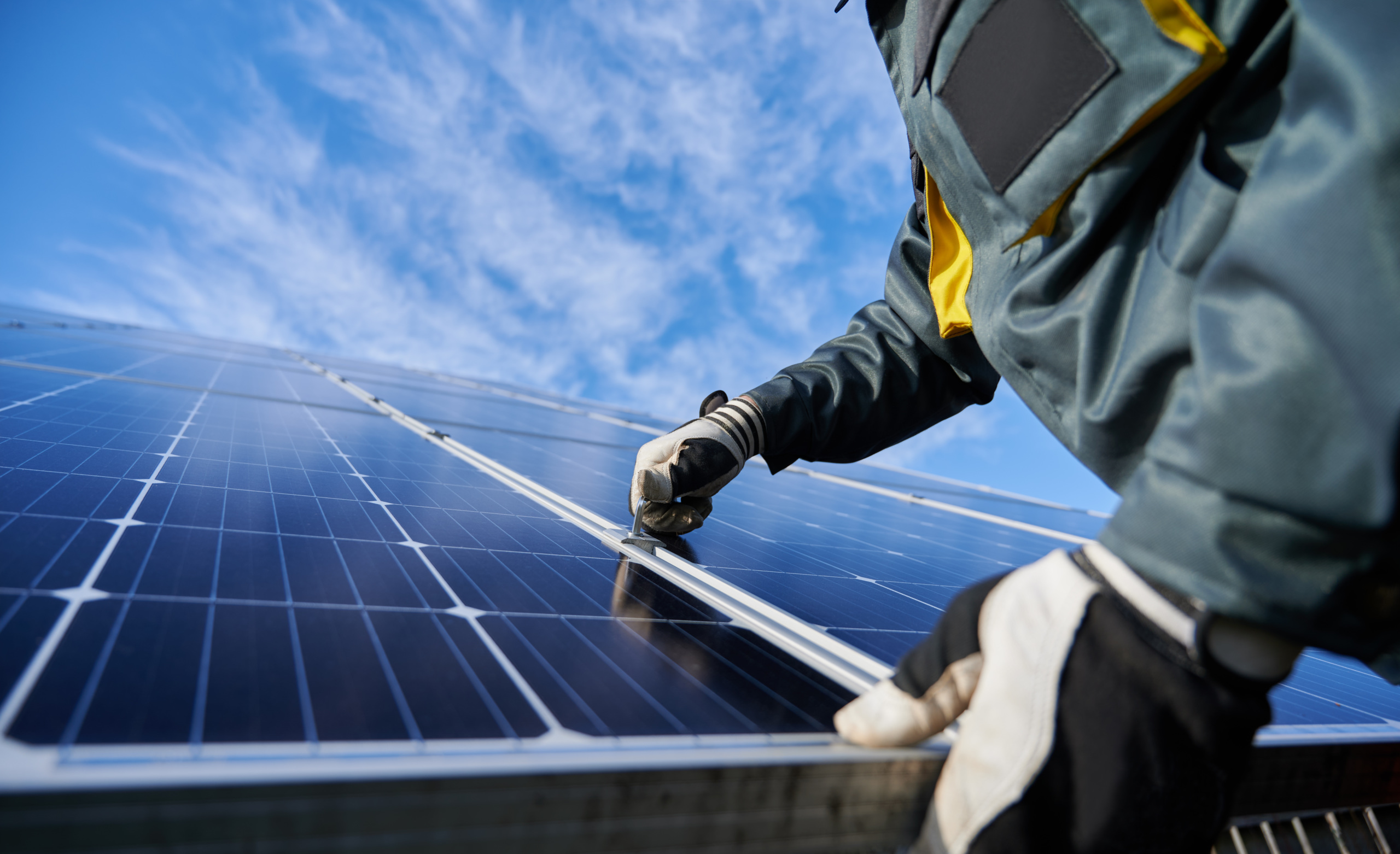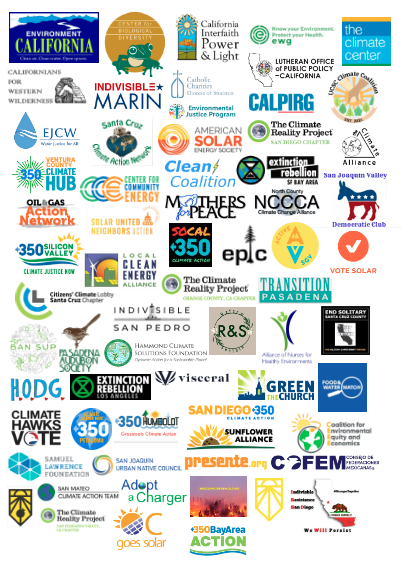
Tell your state legislators to support rooftop solar
Send a message
On Monday, over 60 organizations submitted letters to Governor Newsom, state legislative leaders and California Public Utilities Commission (CPUC) commissioners calling for immediate action to restore California’s rooftop solar growth. New policies slashing rooftop solar incentives have caused plummeting solar installations and created an urgent need for leaders to stand up for solar and battery storage.

Photo by TPIN | TPIN
February 12, 2024
The Honorable Gavin Newsom
Governor, State of California
1021 O Street, Suite 9000
Sacramento, CA 95814
Re: Stop the solar crisis and stand up for California’s climate leadership
Dear Governor Newsom,
Cc: President Reynolds, Commissioner Shiroma, Commissioner Houck, Commissioner Reynolds, Commissioner Douglas, Assemblymember Petrie-Norris, Senator Bradford
California has long been a leader in fighting climate change in large part by deploying renewable energy technologies that shepherd us away from dirty fossil fuels toward a cleaner future. Leadership on clean energy is something you have championed as governor.
Our ability to reach our clean energy goals, however, is in jeopardy due to the state of crisis in the rooftop solar market. Rooftop solar and battery storage are essential to meeting our climate change goals – California cannot be a leader with rooftop solar and storage crawling at a snail’s pace. We are writing to ask for your attention and leadership on this critical matter.
Please take immediate action to restore California’s rooftop solar growth by considering the following actions:
Rooftop solar has been the workhorse of our clean energy transition since the Million Solar Roofs Initiative in 2006. We’re already closing in on 2 million solar rooftops since hitting 1 million in 2019. Thanks to forward-looking public policy, solar energy has become the “people’s choice” of clean energy, embraced as a no-brainer home improvement project by millions of families throughout the state. It has also been embraced by thousands of public schools, multi-family housing developers, businesses, houses of worship, and farms. California now has more installed solar capacity than any other state, but we still need much more distributed solar electricity generation to meet our 100% clean energy requirement.
The California Energy Commission estimates we need to build 6 gigawatts (GW) of new renewable energy and energy storage every year between 2020 and 2045 to meet our 100% clean energy goals. Recently, you raised the bar, calling for the state to get 90% of the way there by 2035. We applaud your call to action but it requires us to move even more quickly toward renewable energy. Yet, the state is currently headed in the opposite direction.
Following the CPUC’s R.20-08-020 proceeding related to net energy metering (NEM), California’s progress toward clean energy and climate goals is in jeopardy. When the CPUC slashed successful rooftop solar incentives, it caused a crisis within the rooftop solar market. History shows that drastic cuts to rooftop solar incentives can cause solar installations to plummet, and we’re now seeing this play out in California. New data from the investor-owned utilities shows that solar interconnection applications have decreased between 77% and 85% year over year since implementation of the new “Net Billing Tariff” in April 2023. As a direct result, the California Solar and Storage Association estimates that 17,000 solar jobs were lost in 2023 along with many solar businesses.
The CPUC went even further in November 2023, dramatically reducing solar incentives for multi-metered properties and prohibiting self-consumption for the majority of multi-family housing projects, schools, farms, religious institutions, strip malls and other commercial properties. This further jeopardizes rooftop solar’s growth once the changes go into effect in February, 2024.
In addition to needing a lot more solar energy, California also needs a lot more energy storage to make the “sun shine at night” and to build a more reliable electric grid. However, the new Net Billing policy is not driving a mainstream market for solar batteries despite the claims to the contrary. Instead, it is simply leading to less solar and approximately the same amount of energy storage as was adopted by consumers before the changes were put in place. We look to you as our governor to bring about changes at the speed and scale needed to truly fight climate change.
In that regard it is important to note that storage deployment potential is not limited to the batteries in the garage. It is projected that electric vehicle batteries, which have much greater storage capacity than typical stationary storage, could serve as a key asset for personal resilience and grid management – if the vehicles have bidirectional charging capability. The CEC estimates that there will be over 7 million plug-in electric vehicles on California roads by 2030. That amounts to over 70 gigawatts of storage capacity in these rolling power plants. Even a small percentage of that capacity, able to be fed to the grid, can help significantly with system demand flexibility.
The undersigned organizations urge you to take immediate action to put California’s solar leadership back on track. Every sunny rooftop without solar panels is a missed opportunity. Every garage without a battery is a missed chance to strengthen reliability and resilience, and to bolster clean energy progress. We cannot afford to leave behind rooftop solar and storage as we experience more climate-induced disasters like extreme heat waves, devastating wildfires and more. Rooftop solar and storage offer a variety of benefits that improve the lives of Californians including cleaner air for frontline communities near fossil gas power plants and fewer greenhouse gas emissions. It also builds a more resilient energy grid that can keep the lights on during disruptions, reduce the need for expensive long-distance transmission lines that raise electric rates and spark wildfires, and cause less disruption of natural spaces for energy infrastructure.
Thank you for considering our request to stand up for rooftop solar in 2024, restore California’s climate leadership and get the state back on track to achieve the clean energy goals you have set for us. We look forward to working with you and other stakeholders to fix the current solar crisis and rebuild a robust rooftop solar and storage market in the Golden State.
Sincerely,
Laura Deehan
Environment California
Roger Lin
Center for Biological Diversity
Gregory Stevens
California Interfaith Power and Light
Bill Allayaud
Environmental Working Group
Ellie Cohen
The Climate Center
Regina Banks
Lutheran Office of Public Policy-California
Jay Buys
Visceral
Michael J. Painter
Californians for Western Wilderness
Ector Olivares
Catholic Charities of Stockton
Yvonne Elkin
Indivisible Resistance San Diego
Susan Morgan
Indivisible Marin
Esperanza Vielma
Environmental Justice Coalition for Water,
Coalition for Environmental Equity and Economics
Derede Arthur
UC Santa Cruz Climate Coalition
Pauline Seales
Santa Cruz Climate Action Coalition
Carly Rixham
American Solar Energy Society
Magi Amma
The Climate Alliance of Santa Cruz County
Cherry Robinson
Climate Reality San Diego
Jan Dietrick
350 Ventura County Climate Hub
Jose Torre-Bueno
Center for Community Energy
Leah Redwood
Extinction Rebellion San Francisco Bay Area,
Oil and Gas Action Network
Emily Brandt
San Joaquin Valley Democratic Club
Ronni Solman
SoCal350 Climate Action
Linda Seeley
San Luis Obispo Mothers for Peace
David Diaz
Active San Gabriel Valley
Cheryl Weiden
350 Silicon Valley
Tom Wheeler
Environmental Protection Information Center
Jessica Tovar
Local Clean Energy Alliance
Lynda Marin
Citizens’ Climate Lobby Santa Cruz Chapter
Marian Sedio
North County Climate Change Alliance
Senait Forthal
OC Goes Solar
Kenneth Unger
Indivisible San Pedro
Lisa Swanson
Climate Reality Project Orange County Chapter
Andrea Leon-Grossmann
Vote Solar
Karinna Gonzalez
Hammond Climate Solutions Foundation
David Weeshoff
Pasadena Audubon Society
Cheryl Auger
Ban SUP
Sylvia Holmes
Transition Pasadena
Karen Nguyen
Reform & Sustain
Polly Estabrook and Jennifer Levin
HangOutDoGood (HODG)
Jenn Engstrom
California Public Interest Research Group (CALPIRG)
Katie Huffling
Alliance of Nurses for Healthy Environments
Ben Schwartz
Clean Coalition
Willow Katz
End Solitary Santa Cruz County
Eric Gill
Extinction Rebellion Los Angeles
Ilene Mier
Sunrise Long Beach
Joyce Lane
SanDiego350
Daniel Chandler
350 Humboldt
RL Miller
Climate Hawks Vote
Shoshana Wechsler
Sunflower Alliance
Laura Neish
350 Bay Area Action
Alexandra Wisenfeld
Professor, Los Angeles City College
Genevieve Guenther
End Climate Silence
Chirag Bhakta
Food & Water Watch
Bart Ziegler
Samuel Lawrence Foundation
Destiny Rivas
San Joaquin Urban Native Council
Ambrose Carroll
Green The Church
Maryam Dallawar
Sunrise Movement Orange County
Matt Nelson
Presente.org
Robert Whitehair
San Mateo Climate Action Team
George Naugles
Balance2thrive
Glen Brand
Solar United Neighbors Action
Kathy Schaeffer
Climate Reality Project, San Fernando Valley Chapter
Kitty Adams
Adopt a Charger
Annie Stuart
350 Petaluma
Francisco Moreno
COFEM, Consejo de Federaciones Mexicanas
